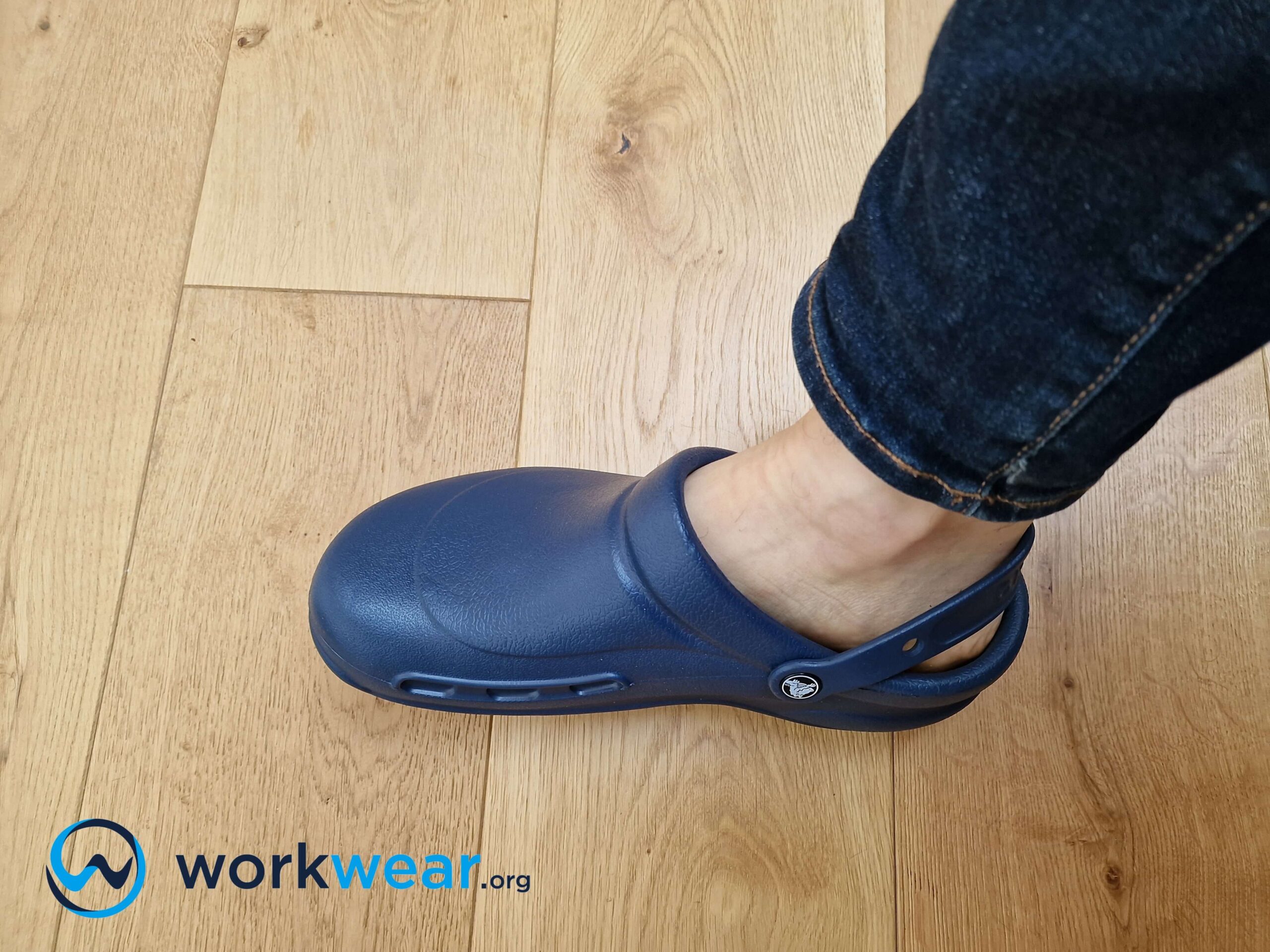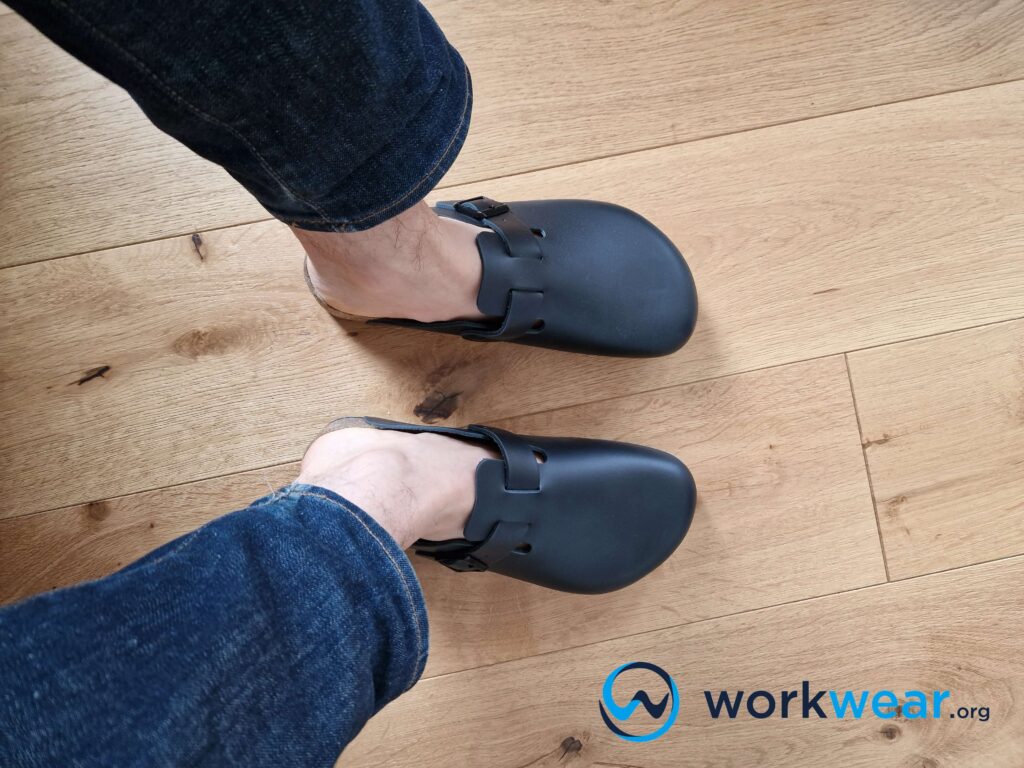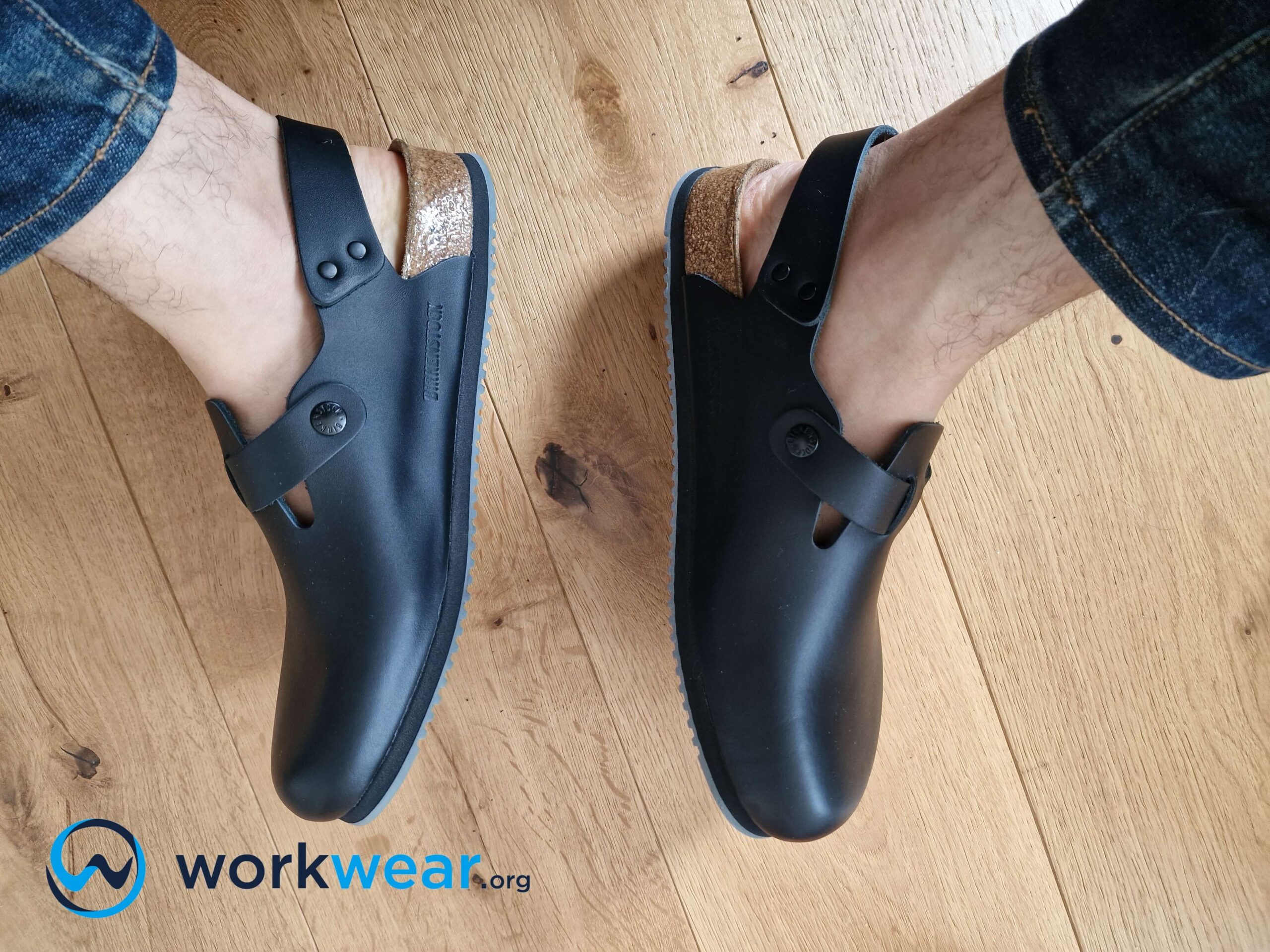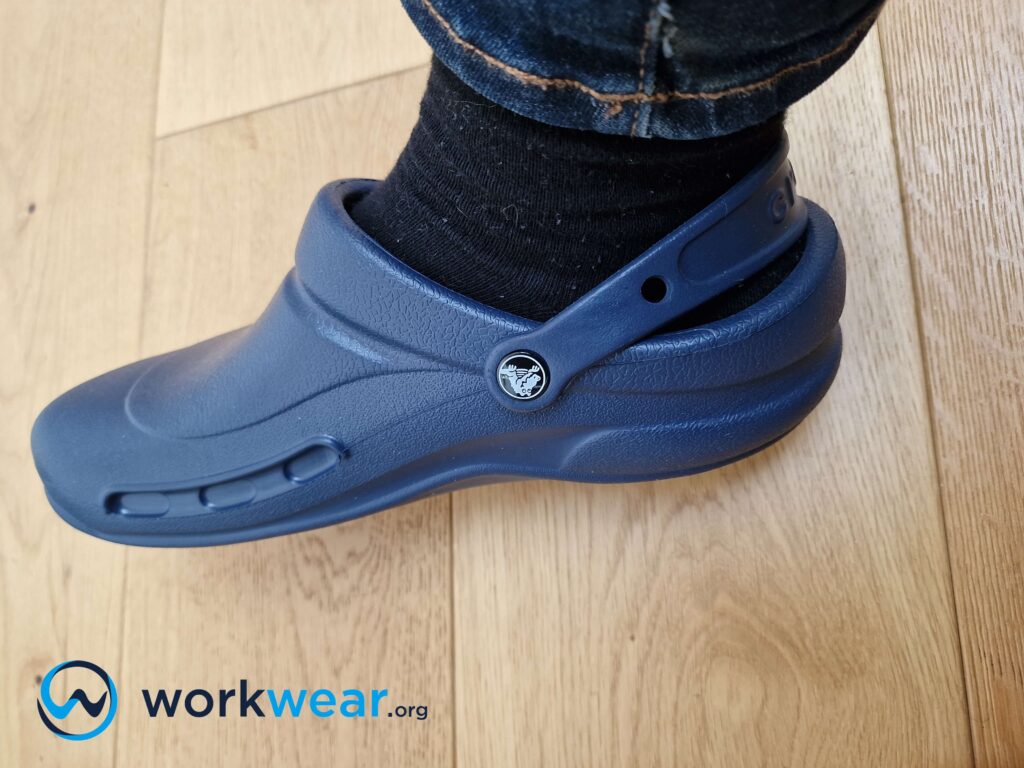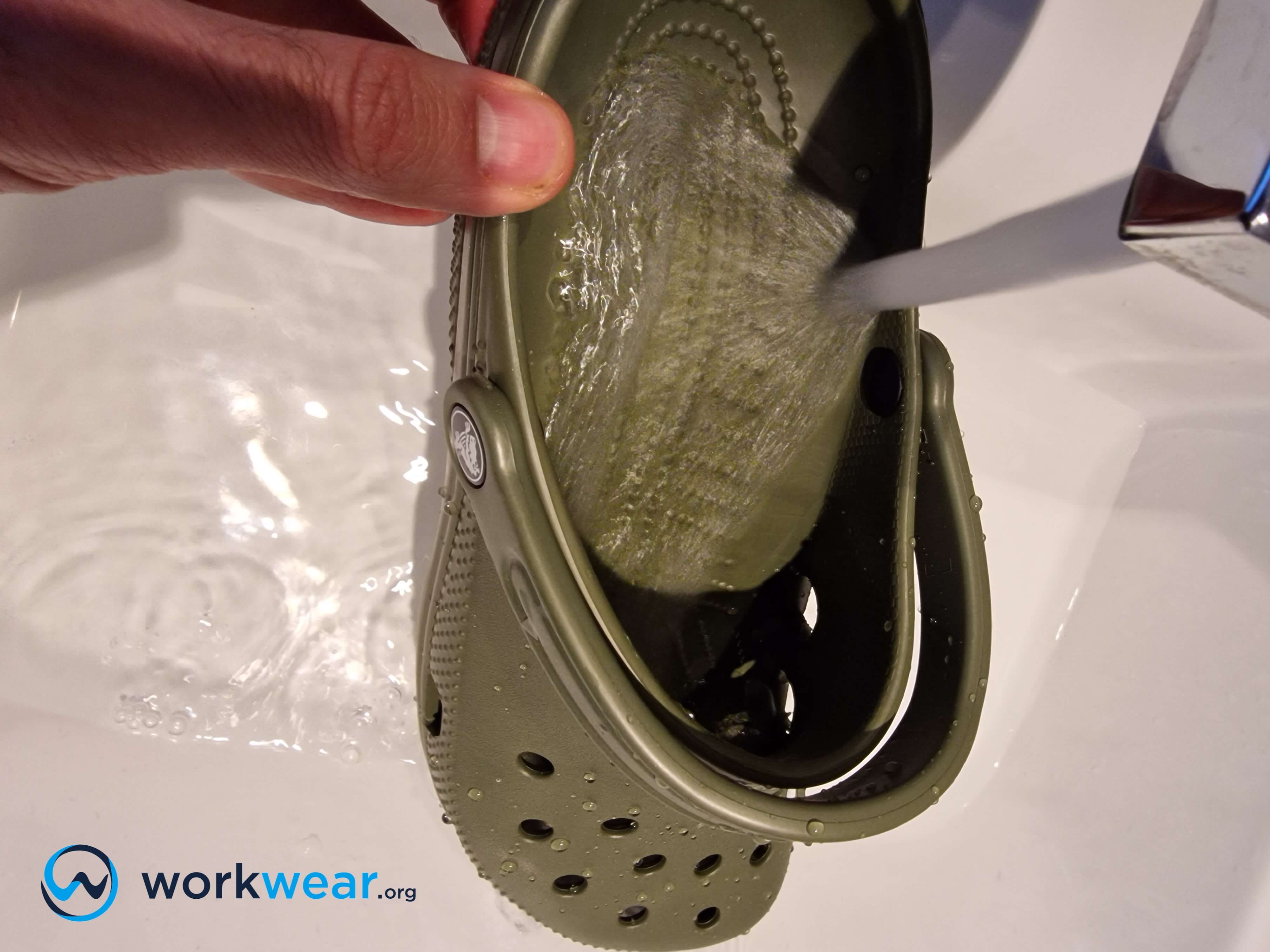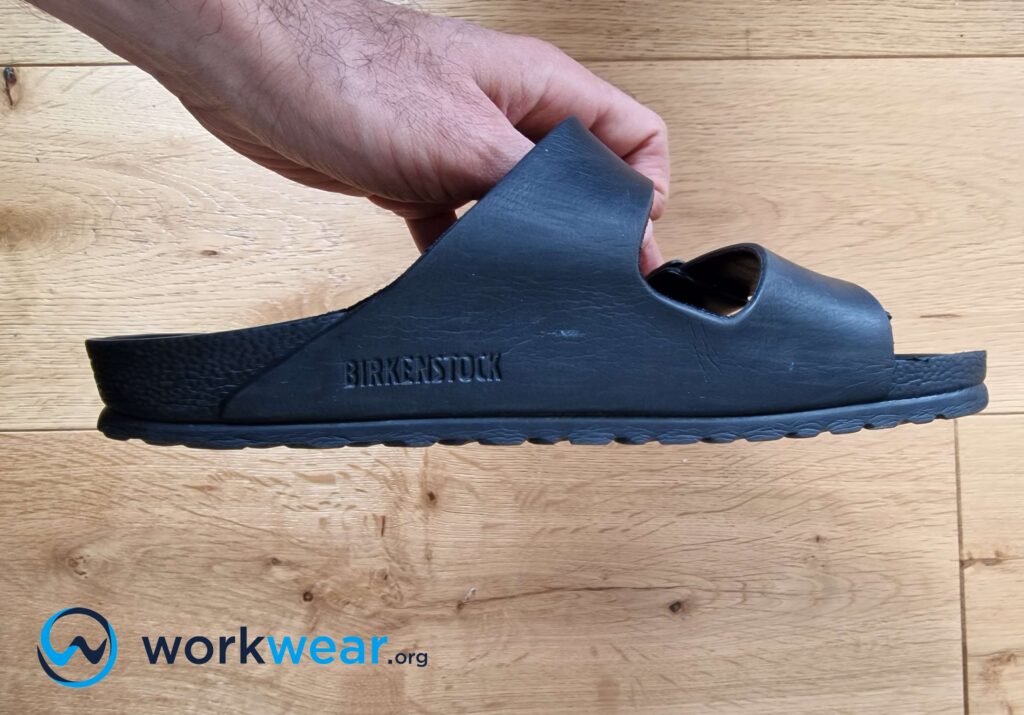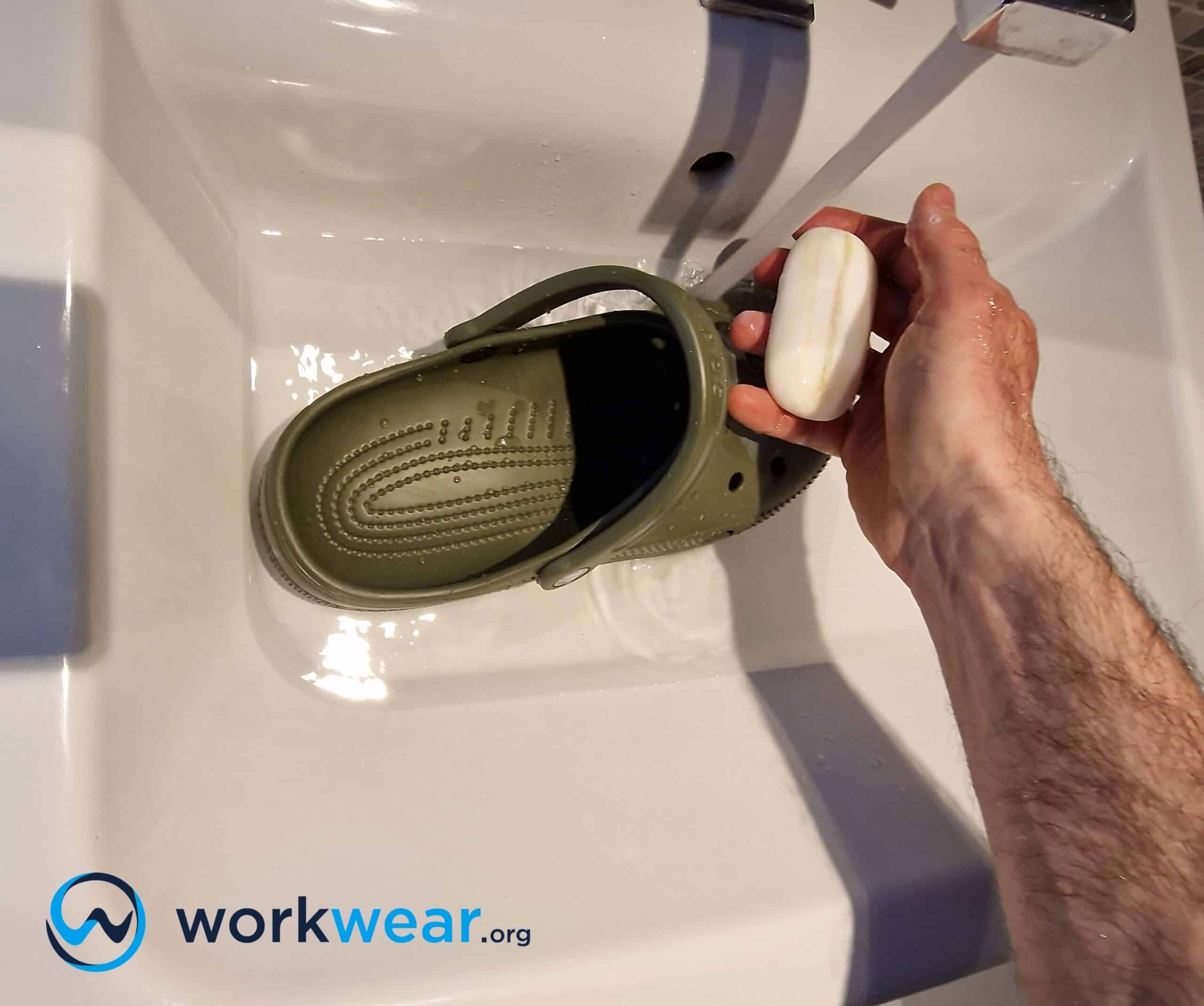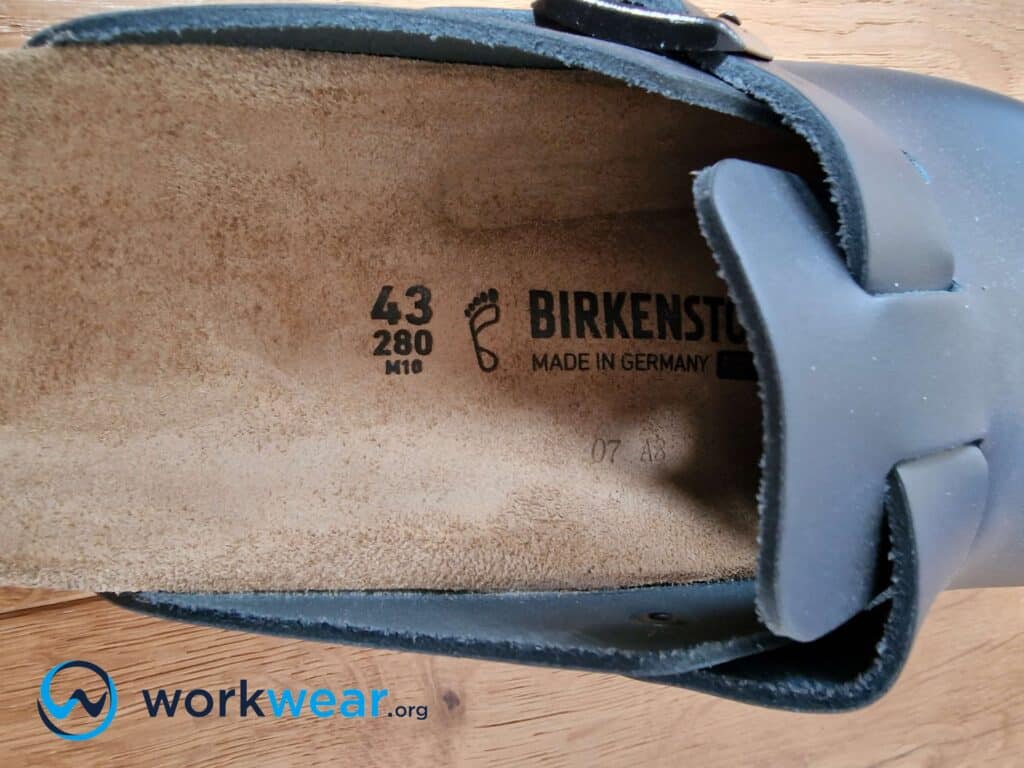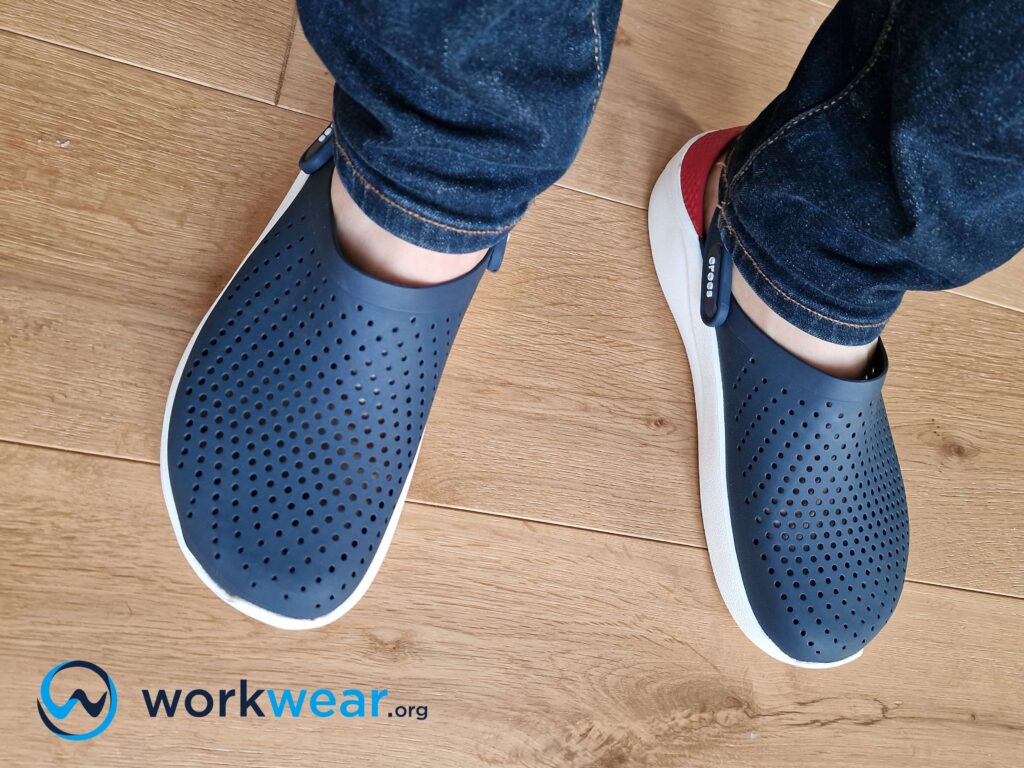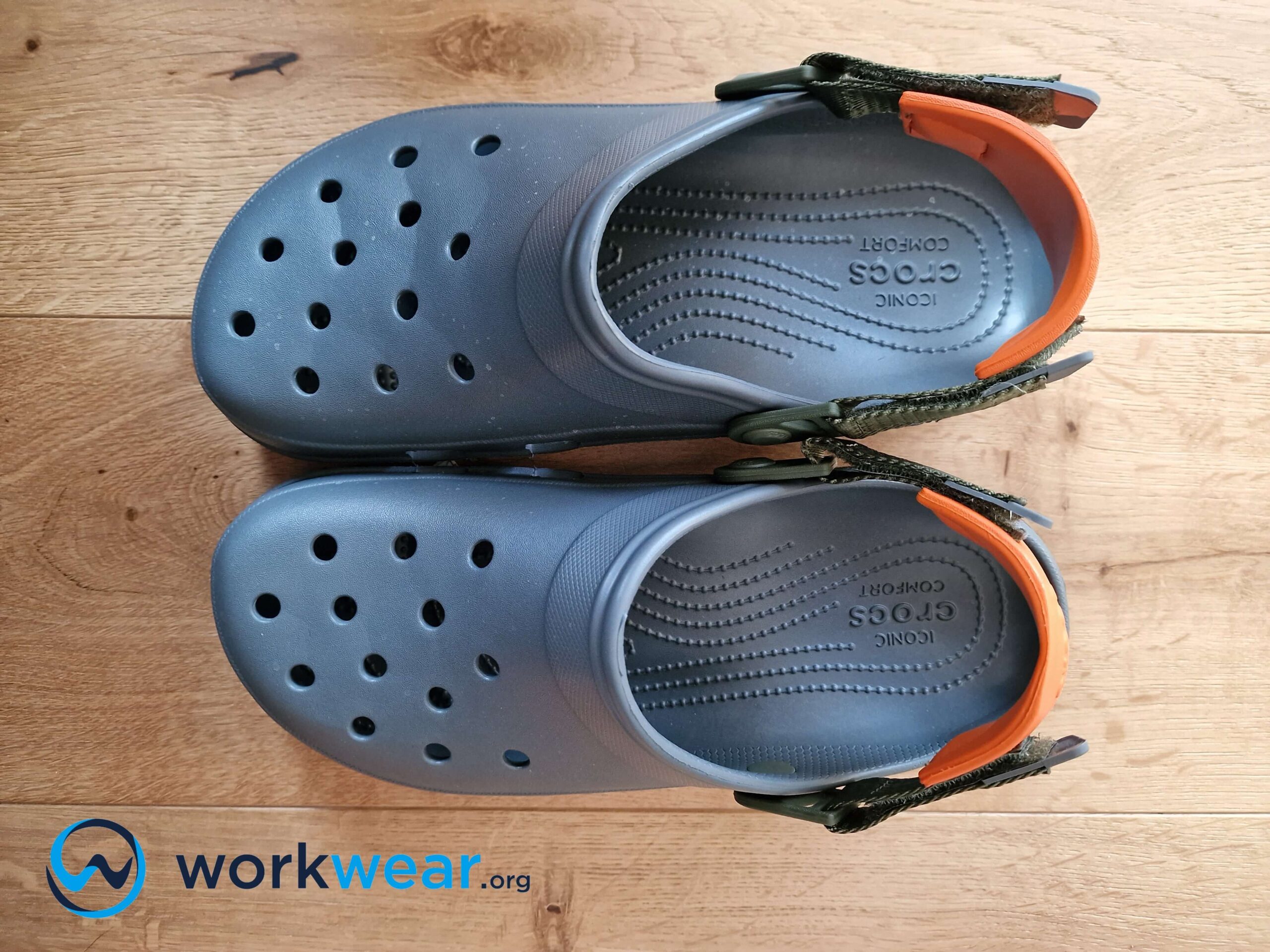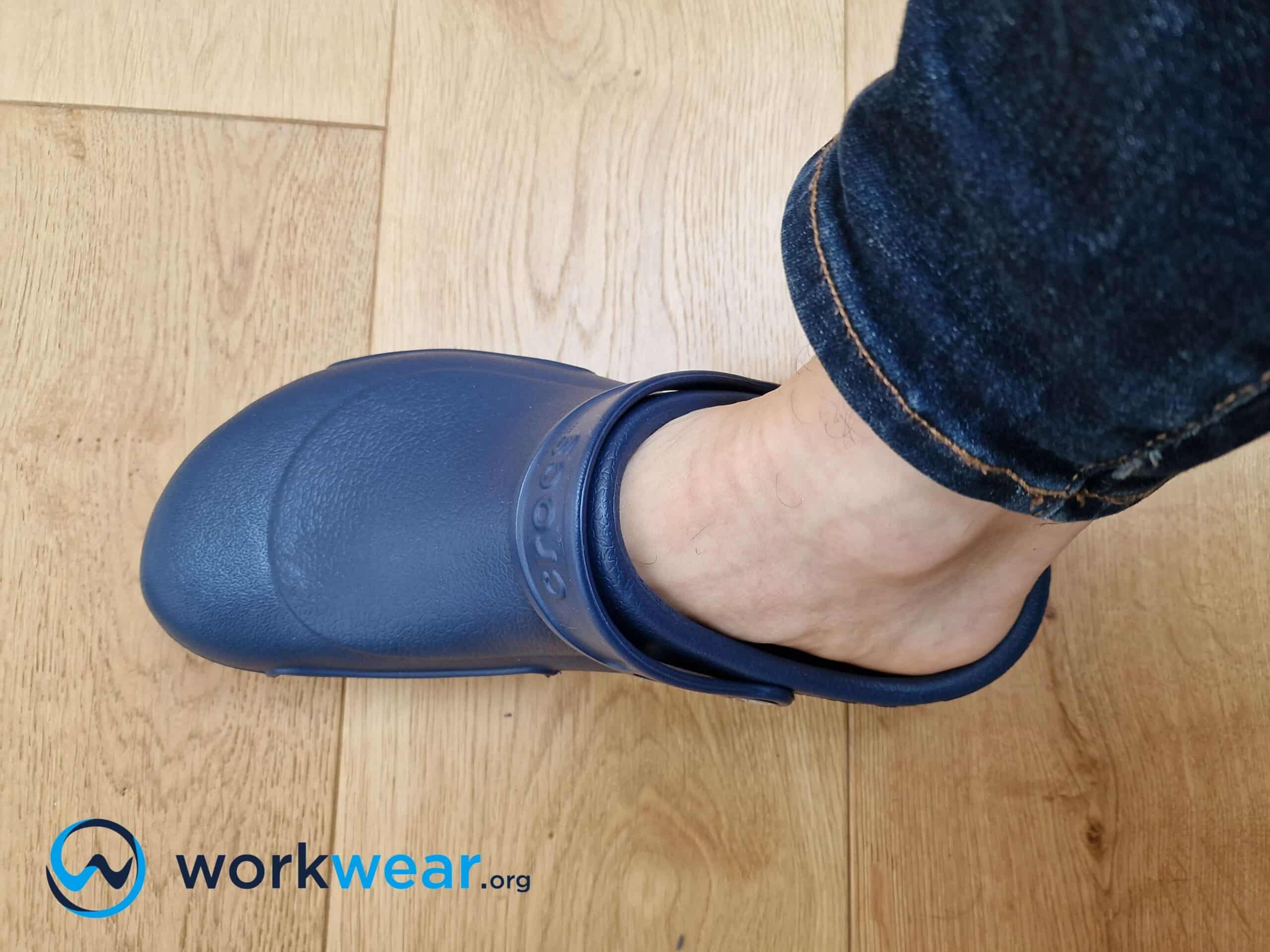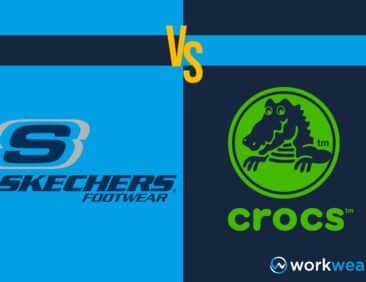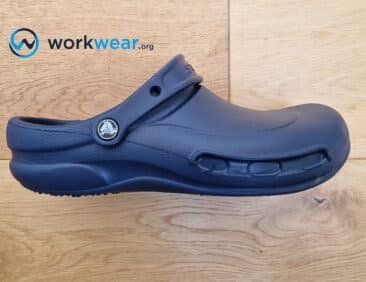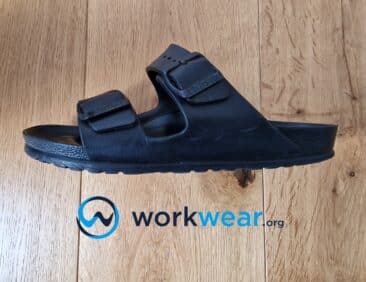Crocs Vs Birkenstocks – The Ultimate Clogs Battle
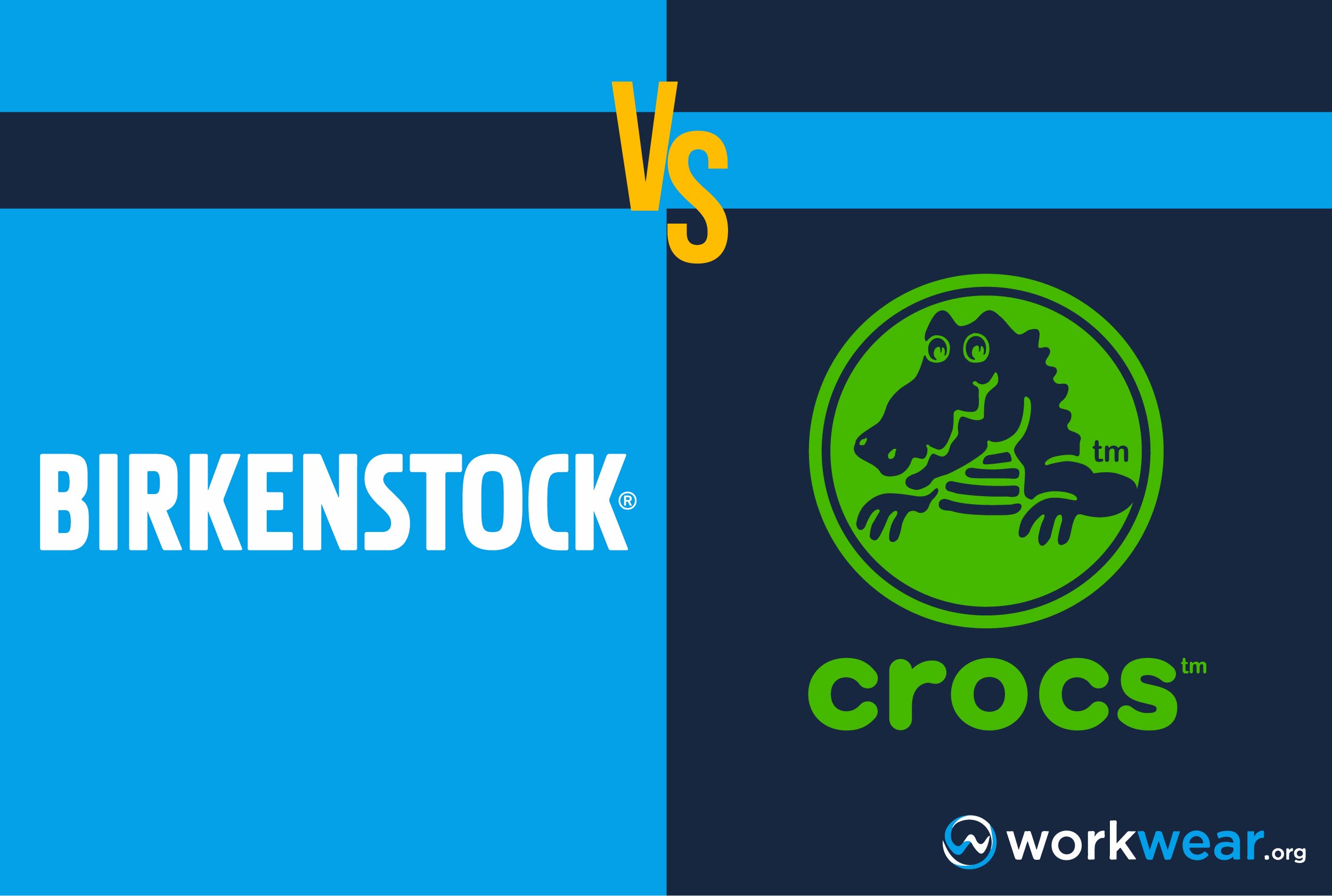
Long hours of standing or walking on the job can take its toll on your body. Your feet will need all the help they can get to stop from aching when you need to stay upright while working all day. You’ll most likely come across Crocs and Birkenstock when choosing comfy footwear for work. Both brands are popular for a wide range of footwear choices for casual use, including clogs and sandals. Birkenstock and Crocs also have their lines of footwear for professional use. These products have amped-up features that make them more suitable for work environments, including professional kitchens, food services, and hospital or healthcare settings. We compared the brands using various evaluation categories to determine their performance in variable work conditions.
Crocs Vs Birkenstock – Evaluation
Comfort & Fit
Birkenstock and Crocs have many loyal customers because of their comfortable footwear options. These brands’ casual footwear choices are the go-to products of those who prioritize comfort over style, and this is also applicable for the clogs and shoes for professional use.
Crocs are made with a flexible proprietary resin material called Croslite, designed to easily follow the feet’s movement for unrestricted comfort. This lightweight material makes Crocs clogs almost effortless to use over long periods because they don’t weigh the feet down. We liked how the soft Croslite material had a bouncy feel, helping propel our steps to prevent a tired feeling after hours of standing or walking. Unlike rubber, Croslite doesn’t rub uncomfortably on the skin, lowering the risk of blisters even with prolonged use. Most Crocs clogs for work have back straps that enable fit adjustments to be done conveniently. They have spacious designs that allow the feet to move naturally and comfortably.
Birkenstock clogs are made with a PU material that isn’t as soft as Croslite, but they’re still some of the comfiest footwear we’ve used. The interior’s structure made a huge difference in comfort. We became fans of the clogs’ insoles featuring a pronounced curve, delivering strong arch support that kept the feet comfortable all day. The cork-latex insoles (fitted into Birks with leather uppers) are molded to the feet’s natural shape for superior comfort and support. We appreciated how the toe bar – that horizontal ridge under the toes – helped our feet have a stronger grip and better stability while walking. We learned that this toe bar also encourages good blood circulation for a healthier walking experience on the job. Birkenstock work clogs have roomy structures promoting natural foot flexing for improved comfort.
Winner: While both brands offer comfortable clogs, Birkenstock is the winner for overall comfort in the work setting. This is primarily due to Birks’ strong arch support that’s necessary to fight fatigue, especially for jobs that involve all-day walking or standing. The curved profiles of Birkenstock insoles help promote lasting foot comfort while enhancing stability while walking.
Convenience
Birkenstock and Crocs both stand out with convenient-to-use footwear. These brands have various slip-on clogs and shoe designs, offering hassle-free use that won’t take too long before going to work.
Birkenstocks for professional use come in varied styles. There are fully enclosed clogs that we easily slip into and out of, just like regular slip-on shoes. We also liked the clogs with back straps, as these helped us conveniently customize the fit. These straps were adjustable, so tightening or loosening the clogs’ fit was quite easy to manage. Some models – such as the Boston Clog – have buckles on top for another way to personalize the footwear for enhanced foot comfort and support.
Crocs clogs for professional use were as convenient as the brand’s line of casual-use footwear. They have slip-on designs that take only a few seconds to get into. We appreciated the addition of heel straps that helped keep our feet inside instead of slipping out at the back. While these straps weren’t adjustable like Birks, they easily pivot – allowing us to place them at the back or in front, depending on how we wanted to wear the clogs to suit different needs at work.
Winner: Birkenstock and Crocs are both winners regarding convenient-to-use professional footwear. Their lace-free styles only take a few seconds to slip on and remove – perfect for jobs always on the go or having little time to spare for tinkering with footwear.
Water Resistance
Crocs and Birkenstocks both had good water resistance. However, it should be noted that these brands’ clogs for professional use are made with materials that are not fully waterproof.
Birkenstock has a line of PU clogs for professional use, but the brand also offers leather clogs less resistant to liquids. We loved how the PU clogs – made with a single, solid piece of PU – had no seams where liquids could seep in. The PU material was water-repellent, keeping water and other liquids out for all-day foot dryness in wet work environments. Birks clogs with raised backs and fully enclosed designs were much better at comfortably maintaining dry feet than those with lower back sections.
On the other hand, Crocs’ Croslite material is water-resistant. Crocs for work clogs didn’t absorb small amounts of liquid spills and helped protect the feet against uncomfortable wetness. However, the clog styles with multiple or large ventilation holes easily allowed liquids in. We felt these perforations negated Croslite material’s water resistance because they let water and other wet elements get into the clogs.
Winner: Birkenstock has an edge over Crocs in terms of water resistance. Birkenstock clogs made with PU are water-repellent, delivering a higher liquid resistance than Crocs’ water-resistant Croslite. Ventilation holes in many Crocs clogs also decrease the structures’ ability to resist liquid penetration.
Cleaning & Maintenance
Crocs and Birkenstock clogs are quite easy to clean and maintain.
Crocs’ Croslite material can quickly be washed off with soap and water. We discovered that dirt and mud could also be removed easily from Crocs clogs with a simple wipe, so there was little chance of unwanted build-up on the footwear’s surface. The easy removal of dirt protected the Croslite material from becoming stained and kept it looking great for much longer.
Birkenstock clogs made with PU are just as convenient to clean. We were amazed that the PU structures could be cleaned in hot water reaching up to 80° Celsius, so it’s easy to sanitize the clogs without worries about the material disintegrating in high temperatures. Meanwhile, the removable footbed was just as easy to clean – and can be washed in water up to 30° Celsius.
Winner: Birkenstock stands out regarding ease of cleaning and maintenance. This is because Birks PU clogs can withstand being cleaned in hot temperatures, making disinfecting easy without compromising the material’s structural integrity.
Durability
Crocs and Birkenstock both use durable materials for their clogs for professional use.
The Croslite material showcased in Crocs clogs is durable enough for challenging activities. We noted that Croslite was not only comfortably soft but also resilient and didn’t easily break apart even with heavy use. Styles like the Bistro Clog had thicker structures over the toes for durability and protection. With proper care and maintenance, we expect that Crocs clogs for professional use will last a long time.
Birkenstock clogs use only top-quality materials – PU and leather – that can keep up with the demands of work environments. We discovered that the materials resisted early signs of damage even when the clogs were frequently used. The PU clogs with enclosed styles – such as the A630 clog – were particularly sturdy, with the single piece of material delivering superior resilience while protecting the feet.
Winner: While both brands offer durable products, Birkenstock slightly outdoes Crocs for durability. The PU material is sturdy and won’t break down if exposed to high water temperatures for thorough cleaning and disinfection. Birkenstock’s enclosed clog styles are especially sturdy because no moving parts – such as the pivotable straps on some Crocs clogs – can be the starting points of structural damage.
Main Differences
Arch Support
Birks and Crocs offer arch support, but there’s a significant difference in the level of support these brands’ products deliver.
Crocs clogs typically have contoured footbeds that help stabilize the feet. However, we discovered that the Croslite material’s soft quality decreases the support the shaped footbed provides. The curved footbed didn’t have the stiffness needed to firmly secure and support the feet’s arches, so Crocs may not be the best choice for those requiring superior arch support to prevent discomfort.
Birkenstock clogs for professional use come with two types of supportive footbeds. The clogs with leather uppers typically have curved cork-latex footbeds, offering strong arch support and ample cushioning. The PU clogs have also contoured footbeds – but we noted that the PU material had comforting rigidity and supported the arch firmly in place.
Winner: Birkenstock wins regarding arch support. Its clogs have either cork-latex or PU footbeds curved to support the arches. The PU material in Birkenstock clogs is considerably more rigid than Croslite, so it’s better at providing excellent, long-lasting arch support compared to the softer footbeds in Crocs clogs.
Breathability
On their own, Croslite and PU are both non-breathable materials. However, the varying designs of Crocs and Birkenstock clogs spell the difference in breathability.
Birkenstock clogs typically have solid, one-piece uppers that don’t allow the air to come in. We found out that the styles with raised backs – such as the Profi-Birki Clog that looked more like regular shoes – tended to feel less breathable compared to clogs with lower backs. Birkenstock clogs can feel a lot warmer without holes for air circulation, especially with nonstop use in hot conditions.
On the other hand, we had a chance to try out quite a few Crocs clogs with ventilation ports. An example is the Specialist II Vent Clog which had holes around the toe box for air circulation and water drainage. Meanwhile, the Classic All-Terrain Clog had holes on top in addition to the ones around the toe box. These ventilation ports made a huge difference, making the clogs much more breathable and comfortable.
Winner: Crocs stand out with more breathable clogs. Some styles have ventilation ports to keep the air flowing freely, promoting a cooler, fresher foot feeling. Good air circulation inside the clogs improves comfort during long hours of footwear use, especially in hot or humid environments.
Price
There’s a considerable price difference between Crocs and Birkenstock clogs for professional use.
Crocs at Work PU clogs’ regular prices go from $50-$65 on the manufacturer’s website, and these prices can still be slashed when certain styles are offered on sale. The lower price points make Crocs clogs a good choice for those who want good value for money without compromising functionality for work purposes.
On the other hand, Birkenstock’s PU clogs are offered in the $90-$100 price range on the company’s website. The clog styles with leather uppers are available at prices ranging from $140 to $240, depending on the type of leather used. There’s no doubt that these clogs deliver outstanding quality and performance, but their high prices can be prohibitive for those with limited budgets.
Winner: Crocs clogs outshine Birks regarding price. Crocs are much more affordable and provide good value while offering superior quality and function.
Who’s the Overall Winner?
Based on our experiences and evaluations, Birkenstock emerges as the winner in this comparison of clogs for professional use. Birkenstock clogs typically deliver stronger arch support, better water resistance, and superior durability because of their materials and the way they’re designed. They’re also easier to clean and maintain, with PU options that can be thoroughly cleaned and sanitized at high temperatures without the materials breaking down.
However, we recommend Crocs clogs for work for those who prefer good value options that don’t cost much. Crocs are also great for use in hot or humid work surroundings, as certain styles have ventilation ports that keep the air circulating freely, keeping the feet cool and fresh for longer.
Recap
Go for Crocs if you prefer:
- Breathable clogs with ventilation ports
- More affordable clogs for work
- Lightweight, flexible work clogs
Choose Birkenstock if you:
- Need outstanding arch support
- Want work clogs that can easily be cleaned and disinfected with hot water
- Don’t mind shelling out more for stronger water resistance and durability
Personal Testing Experience
Here’s what we observed while using top-notch work clogs from Birkenstock and Crocs. The Birkenstock A630 Clog had a robust structure that easily withstood challenging work settings and activities without significant damage. The high-traction outsole felt remarkably grippy, making walking on tricky surfaces much easier and safer. Cleaning and maintaining the clogs was hassle-free because they could be fully sanitized with hot water reaching 80° Celsius without worrying about material deterioration. However, the insole wasn’t comfortable because it wasn’t completely soft or flexible.
On the other hand, the Crocs Bistro Pro LiteRide Clog had a comfortably flexible structure courtesy of the Croslite material. The insole, made with the exclusive LiteRide foam, was exceptionally soft and featured raised dots that helped promote good blood circulation. This ultra-lightweight clog still managed to deliver excellent traction over challenging surfaces and had a durable structure ideal for heavy use on the job. There were no holes on the upper, though, so the toes may overheat after hours of use.
Conclusion
Crocs and Birkenstocks are arguably the top brands offering comfortable, reliable clogs for professional use. Both brands offer convenient clogs, with slip-on styles that can be put on and removed quickly. Birkenstock stands out with clogs that deliver stronger arch support and offer a higher level of resistance to water absorption. These clogs are also more resilient against premature damage and can be fully disinfected using high temperatures. On the other hand, Crocs clogs offer better breathability (for styles with perforations) and are offered at lower prices than Birks. They’re made with soft, flexible materials that may feel more comfortable for those not used to wearing clogs with rigid arch support.
Top Recommended Products Based on our Hands-on Testing
Birkenstock
Crocs
FAQ's
- Can Crocs clogs for professional use be personalized with Jibbitz charms?
- Most of the Crocs at Work clogs can’t be customized with charms. However, personalization can be done on the Classic Clog, which can also be used for some jobs.
- Are Birkenstock work clogs suitable for casual use?
- It depends on the style. For example, bulkier styles like the A630 clog may look out of place when used in more laid-back settings. However, sleeker styles like the Tokio Super Grip Clog can pair nicely with jeans and even shorts for casual use.
- Do Crocs clogs cause uncomfortable friction?
- The Croslite material may rub uncomfortably against the skin, especially with sweaty feet. To avoid this, it’s best to wear socks while using Crocs clogs.
- Will Birkenstock clogs need to be broken in?
- It’s best to break in Birkenstock clogs before wearing them for long periods. The break-in period also allows the feet to adjust to the curved footbed providing strong arch support.
678+
Products Reviewed
24+ Years
Combined Experience
500+ Hrs
Field Testing
